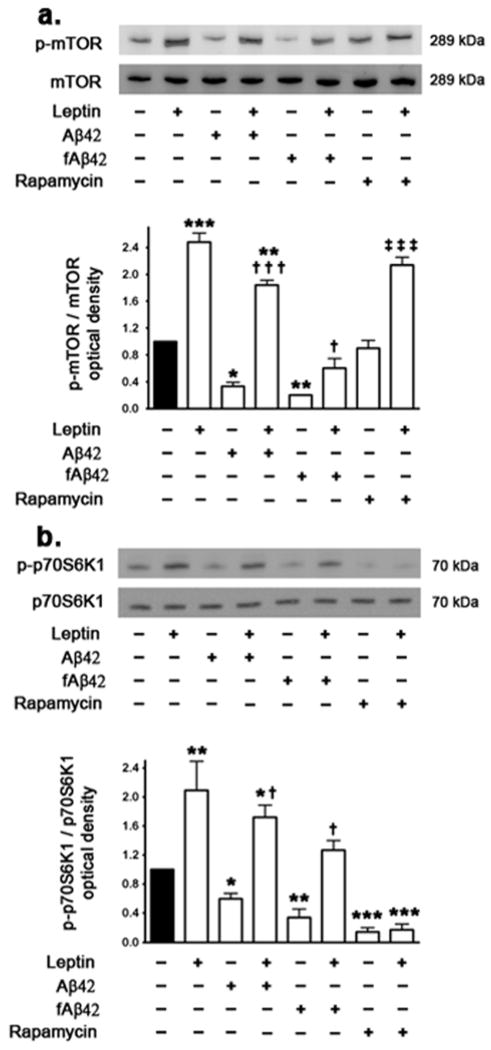Figure 5.
Effect of Aβ, rapamycin and leptin treatment on mTOR phosphorylation and activation. (a) Treatment of organotypic slices with soluble Aβ42 or fAβ42 for 72 hours significantly decreases phosphorylation of mTOR at Ser2448 residue. The mTOR inhibitor rapamycin does not affect mTOR phosphorylation. Leptin treatment, either alone or in association with soluble Aβ and rapamycin, dramatically increases p-Ser2448 mTOR to levels higher than basal levels. However, leptin only partially reversed the decrease in levels of p-Ser2448 mTOR induced by fAβ42. (b) Treatment of organotypic slices with soluble Aβ42, fAβ42 and rapamycin for 72 hours significantly reduces phosphorylation of p70S6K1 (p-Thr389 p70S6K1). Leptin treatment, either alone or in association with soluble Aβ increases p-Thr389 p70S6K1to levels higher than basal levels. Leptin also prevented the decrease in p-Thr389 p70S6K1 induced by fAβ42. However, leptin fails to prevent the inhibition of p-Thr389 p70S6K1 caused by rapamycin. Data is presented as mean values ± S.E.M. *p<0.05, **p<0.01 and ***p<0.001 versus control, † p<0.05 and ††† p<0.001 versus soluble Aβ42 or fAβ42, ‡ ‡ ‡ p<0.001 versus rapamycin.

